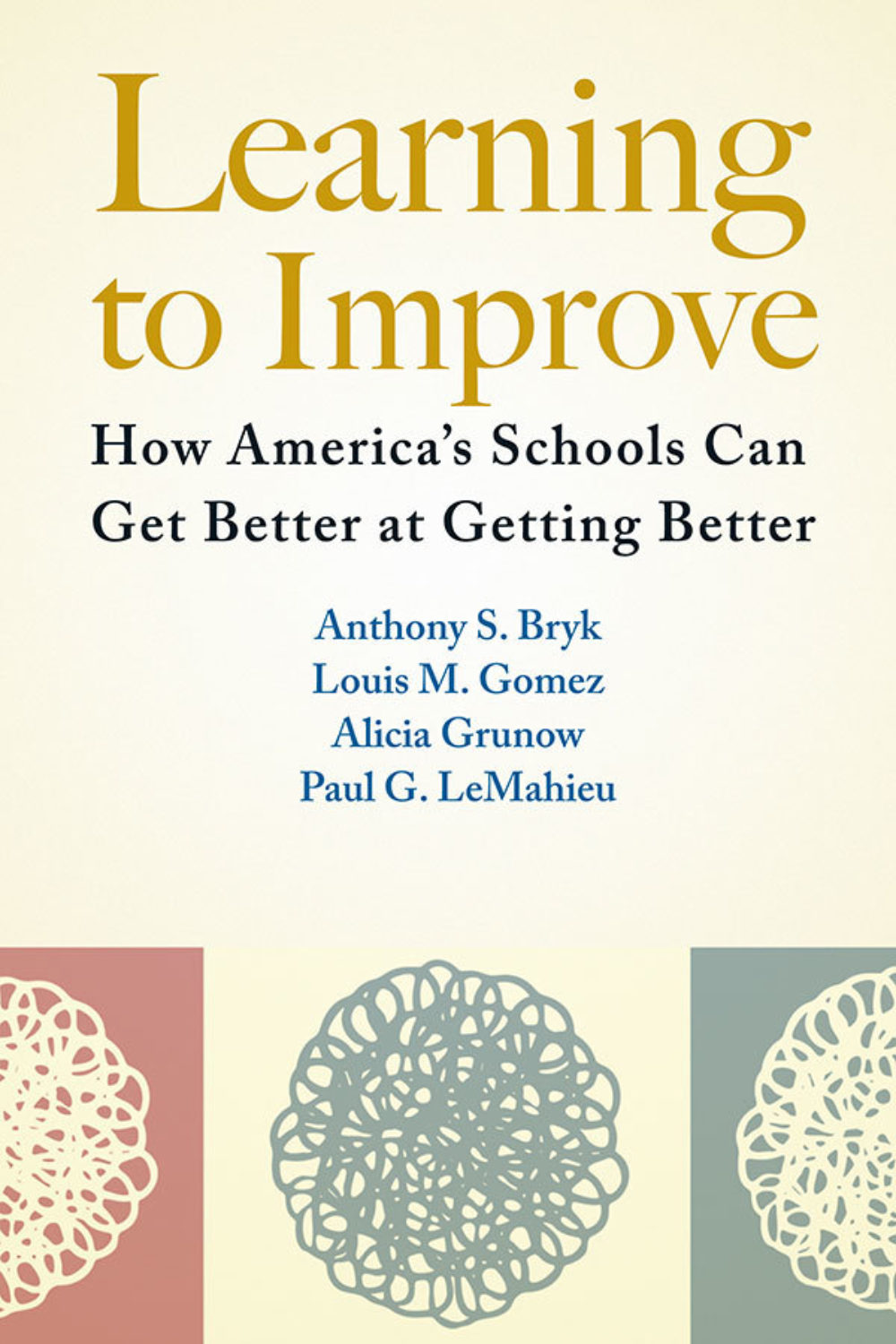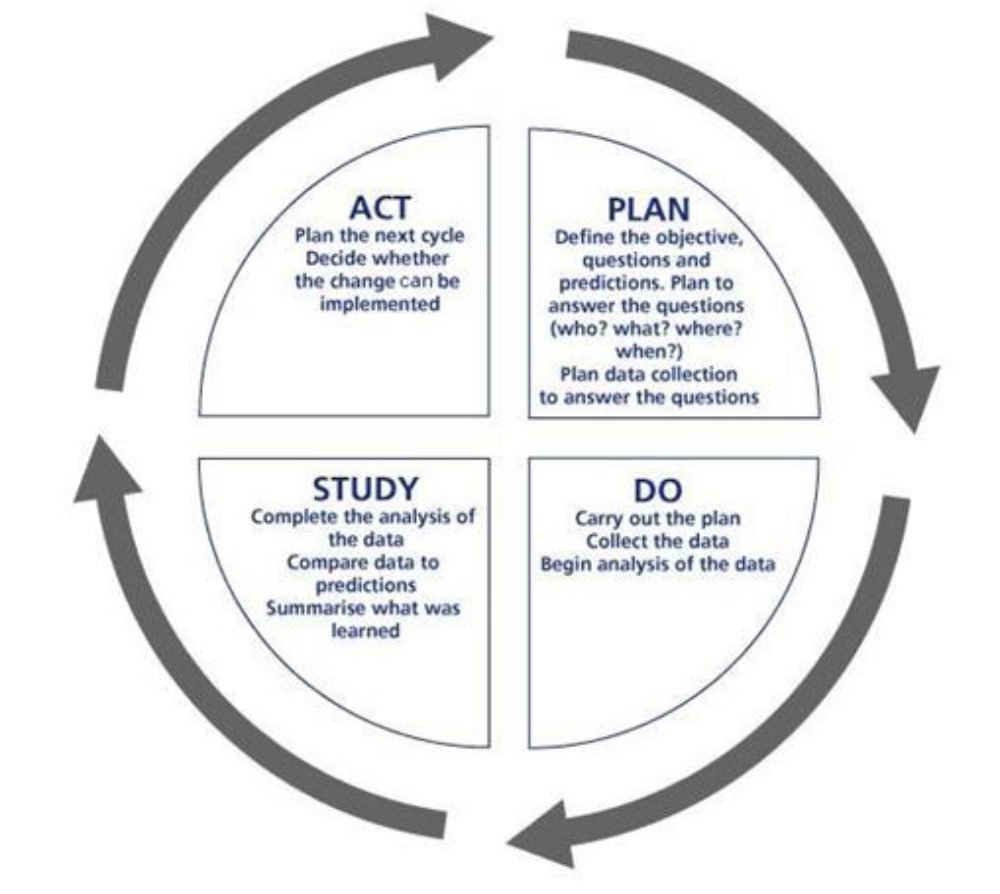Six Principles of Improvement Science That Lead to Lasting Change
“In an improvement-centered world, practitioners are not just passive recipients of others’ research, but active agents of change. They own problems, examine causes, and collaborate with researchers and others.” (Anthony Bryk, Louis Gomez, Alicia Grunow, and Paul LeMahieu)
In Learning to Improve: How America’s Schools Can Get Better at Getting Better, authors Anthony Bryk, Louis Gomez, Alicia Grunow, and Paul LeMahieu make a compelling case: education is slow to change because we have a case of “solutionitis.” In a profession that is deeply complex and highly variable, we gravitate towards sweeping solutions and try to impose them quickly. This approach, which the authors call “going fast and learning slow,” rarely works and often breeds initiative fatigue or resistance among the people who matter most to lasting school change: teachers.

Source: Carnegie Foundation
Bryk, Gomez, Grunow, and LeMahieu articulate three aims of educational improvement: improved effectiveness, greater efficiency, and enhanced engagement. They argue that the best way to meet these aims is to embrace the complex learning environments of schools and prioritize the voice and agency of the teacher, the person who is most often responsible for implementing new ideas.
Improvement science calls for the creation of a “network of expertise” that involves practitioners, academics, and technical experts who adopt evidence-based processes that solve specific, relevant, and practical problems. It is through this intentional, data-driven, action-oriented work that organizations are able to make improvements that stick.
Six Core Principles of Improvement Science
1. Make the work problem-specific and user-centered.
Schools are excellent at collecting and communicating knowledge, but they struggle with identifying the knowledge most relevant to their specific contexts and translating that knowledge into meaningful action. To do this, the traditional power dynamic of school change initiatives must be reversed: instead of school leaders imposing outside ideas on teachers, it is teachers who must be the lead improvers. Outside experts and school leaders become consultants charged with 1) supporting the teachers by synthesizing data as well as providing valid and relevant research and 2) ensuring teachers have the time, space, and support to do this work.
Call to Action: Collaborate with teachers to answer two questions, “What specifically is the problem we are trying to solve? How do we know it’s a problem?”
2. Focus on variation in performance.
In improvement science, there is no such thing as a panacea. Share on Twitter →
Learning is complex; thus, any lasting change in schools must be about “getting quality results under a variety of conditions.” Counterintuitively, this is not about developing a wide array of highly individualized programs. Instead, improvement science calls on us to identify and commit to “standard work processes” that reduce cognitive load and allow us to focus on the more complex elements of our work. The authors cite a study of airplane pilots as an example: the process of flying a commercial airline jet is highly standardized despite the fact that pilots are highly expert. Pilots’ expertise must be reserved for the complex, the unexpected, and the unusual. Standard work processes preserve and protect expertise, leveraging it when it is needed most.
Call to Action: We often seek out “what works” in schools, but we should expand that notion to “what works, for whom, and under what set of conditions.”
3. See the system that produces the current outcomes.
Systems thinking is an essential trait of improvers. All those involved in a change initiative must understand how the system in which they operate has created the outcomes they want to change. Approaching change from a systems perspective begins with a simple question — “Why do we get the outcomes we currently do?” — and continues by collecting answers from a variety of stakeholders to ensure that a complete, nuanced portrait of a system emerges. Only then can specific elements or processes of the system be targeted for change.
Call to Action: Use visualization (a flowchart, for example) to clearly articulate how “local conditions shape work processes and resulting outcomes” in various systems in your school.
4. We cannot improve at scale what we cannot measure.
While change initiatives might be born in exciting theory or new research, they survive because they are regularly tested and gradually expanded in practice using clear, specific metrics. Hypotheses like “formative feedback improves student performance” and “routine student work review protocols enhance teacher practice” can be proven only with the analysis of data collected from embedded practice. The authors suggest an important role for outside researchers here: they can both introduce interesting theories of practice and support teachers in collecting and analyzing the data that will show whether or not the initiative is achieving desired outcomes.
Call to Action: Transform a “working theory” (“I think/believe that we should…”) into a “theory of practice” (“By changing this specific process, we can measure…”)
5. Use disciplined inquiry to drive improvement.

Source: Learning to Improve
Once metrics for success have been identified, the authors recommend a simple testing cycle to ensure schools are nimble enough to reflect, revise, and scale. Much like the scientific method, the “Plan-Do-Study-Act” (PDSA) cycle is built to be repeated so that an initial hypothesis (Plan) can be tested in practice to collect data (Do), that data is analyzed (Study), and decisions made about how the next cycle should play out to broaden the improvement’s impact (Act). The essential component is that this cycle repeats; too many change initiatives stall out if the “do” phase doesn’t work out as planned.
Call to Action: Reorganize a current change initiative into the four phases outlined above.
6. Accelerate learning through networked improvement communities (NIC).
By forming a NIC, schools “break down the silos of practice and research,” connecting educators to expert researchers and theorists so they have access to the ideas/research they need to improve thoughtfully and credibly. In addition, leaders should connect researchers to expert practitioners who can help them validate their theories. This ongoing dialogue between fields is the only way to ensure improvement is both valid and working. It also emphasizes what is at the heart of Learning to Improve: that learning is complex because education is a deeply human enterprise, so initiatives driven by people committed to learning together will create change that lasts.
Call to Action: Connect an outside expert or researcher whose work you admire to the most effective teachers in your school. Facilitate a roundtable discussion: what questions are we asking about school? What problems of ideas and practice are we facing?
What is the most effective change you’ve experienced? What were the essential components of that work? Tell us at hello@globalonlineacademy.org or tweet at us.
